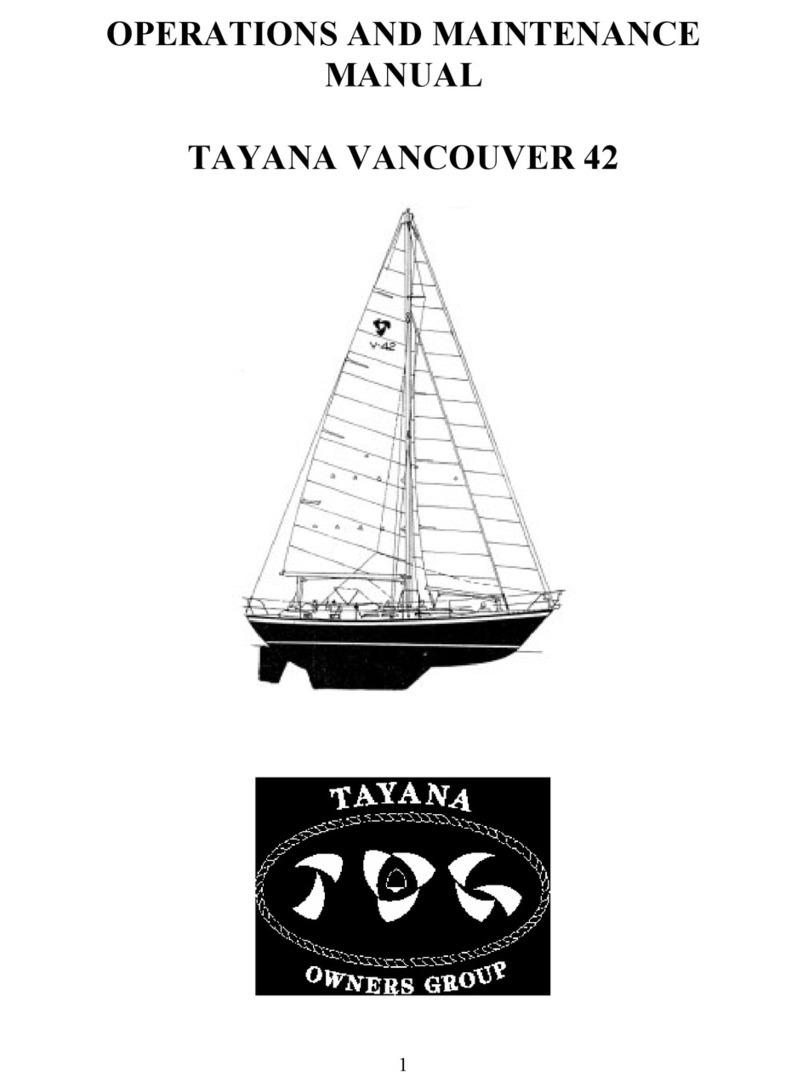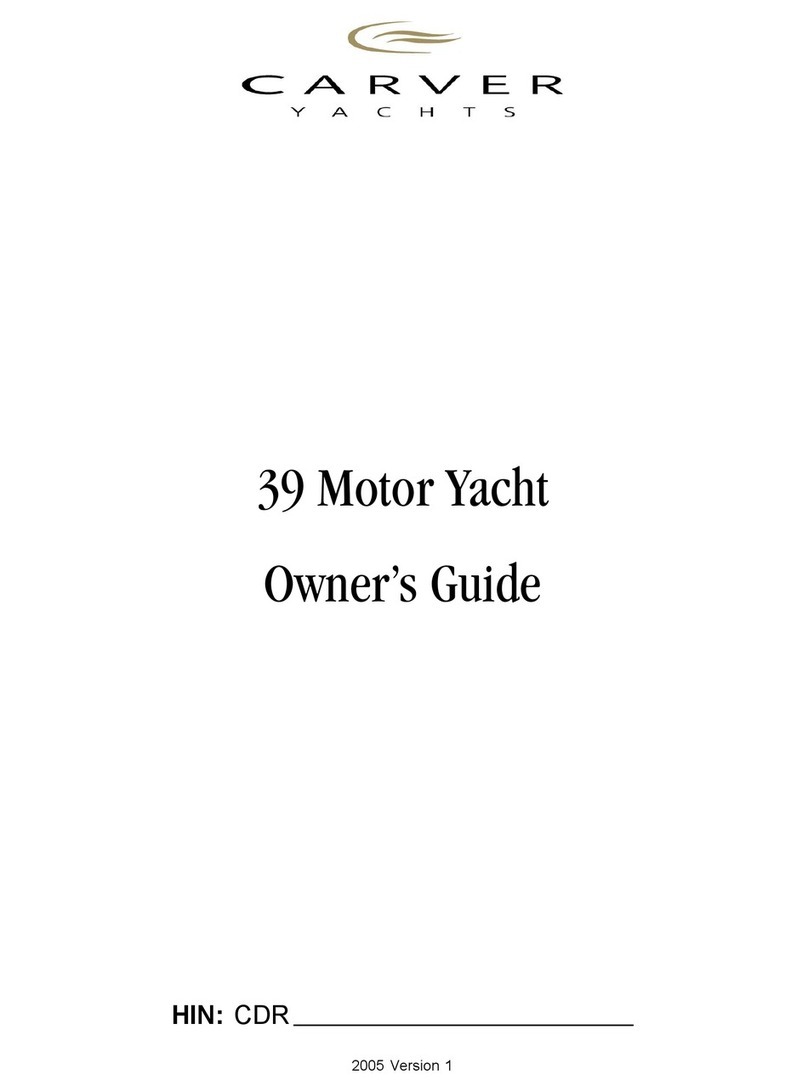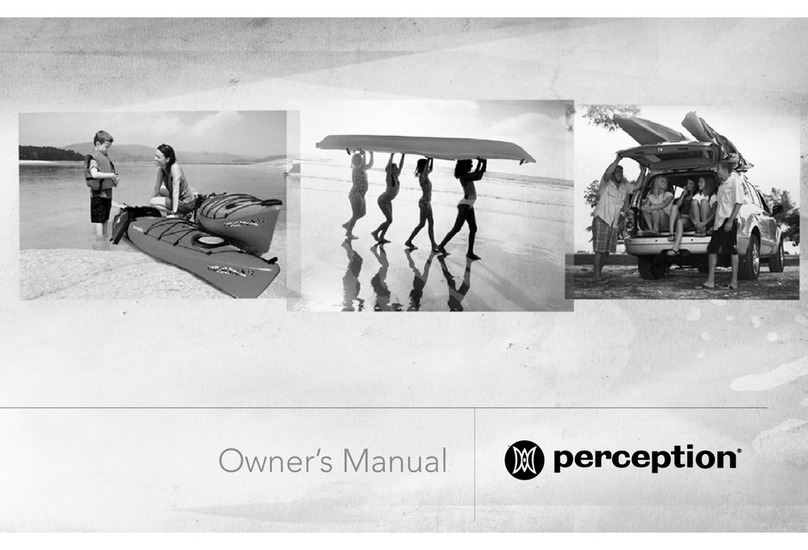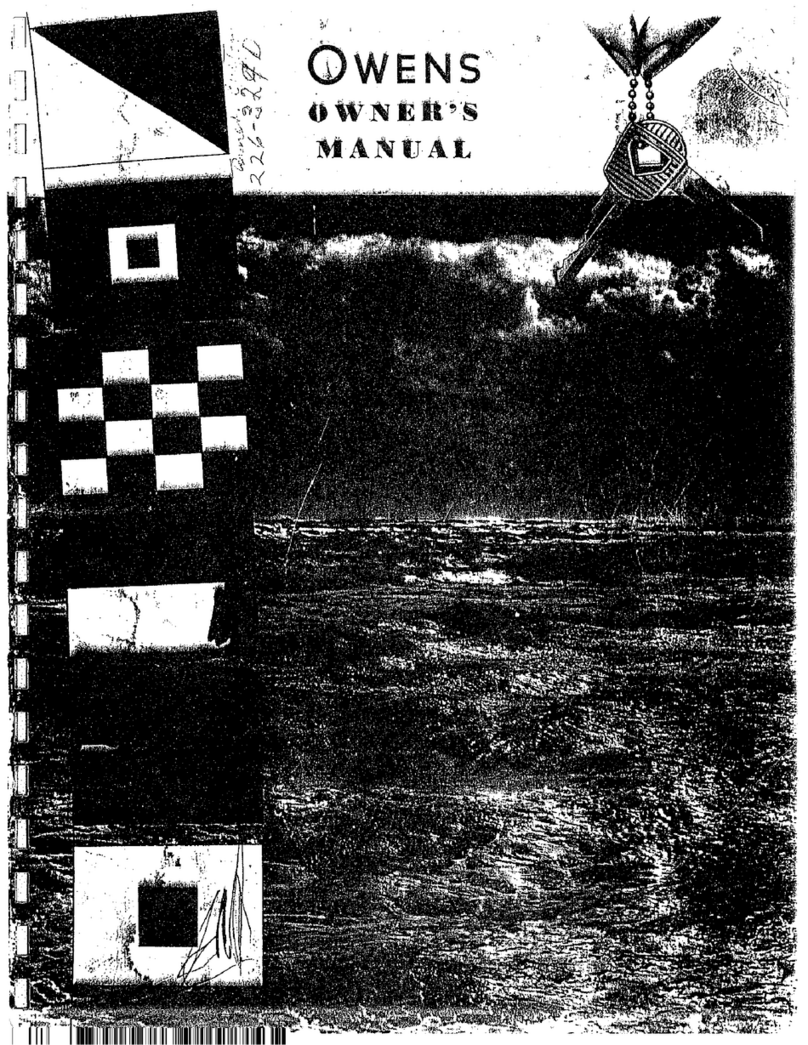Tayana TAYANA-48 User manual

OWNER’S MANUAL
TAYANA-48
STANDARD

CONTENT
Ⅰ. INTRODUCTION………………………………………………..4
1.1 Introduction………………………………………………………….4
1.2 Degree of dangers…………………………………..….................6
1.3 Design category…………………………………………………….7
1.4 Principal particulars………………………………………………...8
1.5 Propulsion system………………………………………………….9
1.6 Shaft & Propeller………………………………………………….13
1.7 Electrical system…………………………………………………..17
1.8 Fuel system………………………………………………………...25
1.9 Bilge & drain water system……………………………................29
1.10 Fresh water system……………………………………………….31
1.11 Toilet shower/sump/common drain system……………………..35
1.12 Salt water system/ seacock and through-hull…………………..38
1.13 Steering system……………………………………………………42
1.14 Sails & rigging……………………………………………………...45
1.15 Safety equipment…………………………………….................48
Ⅱ. MAINTENANCE…………………………………………..52
2.1 General hull maintenance…………………………………………52
2.2 Gel coat……………………………………………………………...52
2.3 Fiberglass/Gel coat stains & scratches…………………………..53
2.4 Fiberglass/Gel coat special care for boats be moored...............53
2.5 Bottom paint care………………………………………………...54
2.6 Plexiglas……………………………………………………………54
2.7 The deck & deck fittings………………………………….. ……….55
2.8 Interior wood………………………………………………………56
2.9 Exterior vinyl care…………………………………………. ……..56
2.10 Daily checks……………………………………………………….59
2.11 Battery electrolyte…………………………………………………59
2.12 Corrosion protection………………………………………………..60
2.13 Mechanical………………………………………………………..61
1

2.14 Propeller shaft…………………………………………………….61
2.15 Propeller…………………………………………………………....62
2.16 Fresh water pump strainers……………………………………..64
2.17 Shower drain pump………………………………………………64
2.18 Boat Exterior………………………………………………………64
2.19 Cleaning of the fiberglass………………………………………..65
2.20 Teak Decking………………………………………………………66
2.21 Anti-fouling & Marine growth………………………………………67
2.22 Care & clean of acrylic parts……………………………………..68
2.23 Upholstery etc…………………………………….………………69
2.24 Light fittings…………………………………………….………….71
2.25 Metal fittings………………………………………………….…….72
2.26 Cold water precautions……………………………………….…..72
2.27 Appendices………………………………………………………...73
Ⅲ. OPERATING INSTRUCTION………………………….…..…74
3.1 Useful hints before each journey…………………………………..74
3.2 Pre-start checks……………………………………………………..74
3.3 Starting the engine…………………………………………………..75
3.4 Cold starting………………………………………………………….76
3.5 After the engine have started………………………………………77
3.6 Running in……………………………………………………………77
3.7 Maximum engine speed…………………………………………….77
3.8 Casting off……………………………………………………………78
3.9 Docking……………………………………………………………….78
3.10 Shutting down………………………………………………………..79
3.11 Safety equipment……………………………………………………79
3.12 Etiquette……………………………………………………………...81
3.13 Useful information…………………………………………………...81
3.14 Instrument…………………………………………………………….82
3.15 Tachometer…………………………………………………………...82
3.16 Temperature gauge………………………………………………….83
3.17 Oil pressure gauge…………………………………………………..83
3.18 Gear box oil pressure………………………………………………..83
3.19 Hour meter……………………………………………………………83
2

3.20 Alarm system…………………………………………………………84
3.21 Ampmeter……………………………………………………………84
3.22 Voltmeter……………………………………………………………...84
3.23 Troubles shooting……………………………………………………84
Ⅳ.ENVIRONMENT……………………………….………..…..106
3

INTRODUCTION
1.1 Introduction
Your TAYANA48 is built to a very high specification using the
most modern, advanced and reliable materials and techniques.
The hull is constructed in high-impact, multi-axial laminate
fiberglass. All components and fittings have been chosen to the
highest standards.
To enjoy your quality boat to the fullest it is important that you
become thoroughly familiar with every aspect of its operation
and care. This user handbook has been designed to provide you
with all the information you may require. Always keep it in a
handy place for ready reference.
This handbook is divided into sections covering everything and
includes hints and tips on driving and safety, as well as how to
take good care of your valuable investment.
Your TAYANA48 has been designed to give the highest
standards seaworthiness and rugged durability. In order to
preserve these qualities, it is important to follow the user care
instructions, which have been prepared in order that all aspects
of high performance, good looks and reliability might be
maintained over the years.
With reasonable care and attention your TAYANA48 will give you
many years of pleasure and safe boating. This owner’s manual
has therefore been specially prepared to guide you in keeping
your boat in tiptop condition.
Note
This manual is intended to be a general guide to the
maintenance and operation of this TAYANA48 and equipment
installed. Most of the equipment supplied from other
4

manufacturers includes owner’s or operator’s manual. We urge
that you read those manuals carefully.
The operation of this vessel or any sailboat can be dangerous if
operated in an unsafe manner. This manual is not intended to be
a substitute for training or experience in the safe operation of
this vessel.
We urge each owner not familiar and experienced in the safe
operation of motorized vessel to seek training from an
appropriate organization.
5

1.2 DEGREE OF DANGERS
In this manual and on board the craft, warning sign are placed at
where special precaution has to be taken. Those warning sign
denotes the following degree of danger as the following.
DANGER!
Denotes an extreme intrinsic hazard exists which would result in
high probability of death or irreparable injury if proper
precautions are not taken.
WARNING!
Denotes a hazard exists which can result in injury or death if
proper precaution is not taken.
CAUTION!
Denotes a reminder of safety practices or directs attention to
unsafe practices which could result in personal injury or damage
to the craft of components.
6

1.3 DESIGN CATEGORY
This vessel is design to Design Category A according to CE/ISO
requirement.
Category A – “Ocean”:
This craft is designed for operate in winds that may exceed
wind force 8 (Beaufort scale) and in significant wave heights of 4
m and above (see Note 1 below), and is largely self-sufficient.
Abnormal conditions such as hurricanes are excluded. Such
conditions may be encountered on extended voyages, for
example across oceans, or inshore when unsheltered from the
wind and waves for several hundred nautical miles.
CAUTION!
Please keep this manual in a secure place, and hand it over to
the new owner when you sell the craft.
7

1.4 PRINCIPAL PARTICULARS
TAYANA48-DECK SALOON
Maximum Length Lmax 14.60 m
Length of the Waterline LWL 12.63 m
Maximum Beam Bmax 4.40 m
Maximum Hull Depth Dmax 3.04 m
Draft 1.87 .m
Ballast 5.3 t
Displacement 15.9 t
Sail Area 1,048 sq.ft.
Fuel Capacity 560(145)liters(gal)
Fresh Water Capacity 964(250)liters(gal)
Holding Tank 82(22)liters(gal)
Engine Model YANMAR-4JH4-HTE
Engine Power 73.6 KW (100 HP) 3800rpm
Gear Box Model KANZAKI-KM4A1 2.63:1
Gen Set Model WESTERBEKE 7.6BTD
Gen Set Kw 5.7KW/50Hz
AC Voltage 220 V
DC Voltage 12 VDC
Battery 225Amp/hr x 5 160Amp/hr x 1
Design Category A
Maximum Number of People 8 Person
Maximum Loaded 3.5 t
8

1.5 PROPULSION SYSTEM
The power generated by the engine is transmitted to the
propellers via the transmission, shaft coupling and propeller
shaft assembly. The propeller shaft is supported and aligned
with the engine by a through-hull shaft log and an outside strut.
Your propulsion system is manufactured from high quality
materials. Your system’s performance and life span very much
depends on the care you give it. To maintain its reliability and
ensure the long life for all the components, your system
demands your careful attention, treatment and a consistent
program of preventive maintenance.
Main Engine
This manual does not contain detail information about main
engines. Necessary information concerning the main engine is
in the “Engine Owner’s Manual”. It is important that you read the
“Engine Owner’s Manual” carefully for maintenance and
warrant.
Your boat is powered by one diesel engine. All the operation,
specification and maintenance information is contained in the
engine owner’s manual. Please familiarize yourself with it. The
engine is the heart of your boat and following manufacturer’s
recommendations will provide you with continued boating
pleasure.
CAUTION!
Totally familiar with the safe and proper service procedure.
Always consult qualified mechanics for repair and service
of the engines.
9

NOTE:
It is important that you:
(1) Check the engine lubrication oil level coolant
level and air cleaner before you start the
engine.
Gear Oil Checking Level
(2) Check the transmission lubrication oil level
according to the engine operation manual.
Gear Oil Checking Level
Cooling System
Each engine is cooled by salt water entering the boat through a
sea-cock. The water enters the engine through the engine water
jacket and returned to the sea through the exhaust system.
The cooling system used the incoming salt water to cool a
10

secondary closed cooling system. The salt water flows through
an engine, mounted heat exchanger, cools the closed system
coolant and is returned to the sea via the exhaust system.
Sea Water Inlet for Engine
!
THE COOLING SYSTEM STARTS AT THE COOLING
WATER SEA COCK, WHICH CAN BE SHUT OFF IF
REQUIRED.
MAKE SURE THE SEACOCKS ARE OPEN BEFORE
STARTING THE ENGINE. THE ABSENCE OF
COOLING WATER WILL CAUSE THE ENGINE TO
OVERHEAT AND CAUSE IRREPARABLE DAMAGE.
Alarm System
The engine and transmission are protected by an independent
alarm system consisting of an alarm bell mounted on control
console.
The alarm system was designed to warn you audibly or visibly in
case any of the following possible damaging conditions exist:
(1) Engine temperature (water temperature) exceeds
specified limit.
(2) Engine oil pressure drops below specified limit.
11

(3) Transmission oil pressure exceeds specified limit.
(4) Exhaust temperature exceeds a set up limit.
If any of these occurs the alarm bell will sound and the related
port or starboard alarm lamp will illuminated.
!
IF THE ENGINE ALARM BELL SOUND AND ANY
ENGINE ALARM LIGHT ILLUMINATES INDICATING
AN ENGINE OR TRANSMISSION PROBLEM, YOU
SHOULD IMMEDIATELY:
(1) THROTTLE THE ENGINE BACK TO IDLE
(2) SHIFT THE ENGINE INTO NEUTRAL
(3) SHUT DOWN THE ENGINE
To test the alarm system, turn the ignition switch to the “ON”
position.
Depending upon the engine, the alarm may sound immediately
or after a few seconds delay.
Transmission
Through a series of gears the transmission transmits the motive
force of the engine to the propeller. The transmission has one
forward and one reverse speed. All the operation, specification
and maintenance information is contained in the
“KANZAKI-KM4A1 Operating Manual”.
This manual dose not contains detail information about
transmission gear box. Necessary information concerning the
main engine is in the “Transmission Gear Box Owner’s Manual”.
It is important that you read the “Transmission Gear Box
Manual” carefully for maintenance and warrant.
12

CAUTION!
Always check oil level in the transmission according to the
Transmission Gear Box Owner’s Manual and use the
correct type of oil as specified in the manual.
1.6 Shaft & Propeller
Shaft Assembly
Shafts are selected for your TAYANA48-DECK SALON. This
assembly makes it possible for the shaft to penetrate the hull
bottom without allowing water to enter around the joint. The
shaft coupling is the connecting point between the engine and
the shaft assembly.
TAYANA48-DECK SALON is fitted with flexible coupling to
ensure very smooth and quiet propulsion.
For details of shaft system, please refer to attach DWG. At
appendices.
Although the shaft is properly aligned and couple at the factory,
Propeller shaft alignment must be again check by your dealer or
qualified mechanic during pre-delivery service. Periodic checks
of shaft alignment should be made especially if noise or vibration
occurs.
CAUTION!
Misalignment can cause damage to shaft bearing, shaft,
struts and the engine transmission.
13

Strut and Bearing
The propeller shaft is support on the outside of hull by a strut.
The strut with water lubrication plastic bearing allows free
rotation of propeller shaft.
Seasonal Inspection of each strut should be made to ensure no
damage and strut bearing is not worn excessively.
The propellers installed on your boat are selected because their
diameter and pitch provide the optimum speed and performance
under average conditions of load. Propeller selection must be
based on upon the ability of the engine to turn the propeller and
achieve the manufacturer’s recommended RPM at full throttle.
CAUTION!
Frequent inspection of the propeller is suggested, damage
to one or more of the blades, though slight, can be a source of
annoying vibration.
NOTE:
Variations from average loading, bottom condition
and engine condition could call for a propeller
change to achieve the performance desired.
14

! IMPROPER PROPELLER SELECTION AND INSTALLATION
COULD RESULT IN LOSS OF THE PROPELLER OR
EXCESSIVE STRESS ON THE POWER TRAIN LEADING TO
POWER TRAIN FAILURE. PLEASE CONSULT AND EMPLOY
A SKILLED TECHNICIAN WHEN CONTEMPLATING A
CHANGE.
Propulsion System-Shaft Seal
PYI Drip less shaft seal
Slight moisture from the seal is common. Please carefully read
the information sheet on the seals pertaining to adjustment.
CAUTION!
Never spray lubricants on the drip less shaft assembly
black components. Damage will occur.
CAUTION!
The following document will be ship loosed by your
boat
Regarding the engine layout & operation PLS refer
to
--YANMAR ENGINE OPERATION MANUAL—
15

16

1.7 ELECTRICAL SYSTEM
General
The TAYANA48 electric system contain a 12 volt DC circuit
serviced by batteries and a 220 volt AC system serviced by
either the on board generators or shore support system, for use
while facilities exists.
5.7 kW generators are fitted as standard. Refer to the
manufacturer’s handbooks for details of operation and
maintenance.
All installations and cabling are clearly labeled for ease of
maintenance. The wiring circuits are split into several looms,
bundled together where appropriate, depending on their route
through the vessel and their origin and destination. Each cable
in each loom is labeled at end with shrink fit containing a code.
Please refer to the wire number codes.
D.C. Control
The basic service and starting circuit is 12 volt DC. The
electronic equipments are supplied by 12 volt DC and with
negative ground. Details of electric circuits can be found on the
schematic enclosed with this manual.
On the main DC control panel are switches linked to the circuit
breakers controlling power supply to the systems including many
the vessel’s domestic service, the navigation instruments, lights,
gray water and holding tanks’ discharge pumps.
17

Batteries System
There are five 225 AH and one 160AH batteries. The 160 AH
battery is dedicated to start the main engine, one of
batteries are dedicated to start the generator, two of
batteries are dedicated to start the bow thruster and the
remaining two to house service.
Your 12V batteries system is powered by marine grade
12 volt, 225-AMP-hour battery. Attention should be given to
maintaining the proper level of distilled water. Do not overfill. The
batteries location can be found in the salon arrangement layout.
The batteries are provided with a tie-down to prevent
tipping over at extreme angles of heel. Be sure these tie-downs
are fastened securely.
With proper care, the battery installed will provide long and
satisfactory service. Proper care is not difficult, if a few basic
points are kept in mind.
CAUTION!
In order to prevent a short circuit between battery
terminals, do not store conductive objects near the batteries(e.g.
metal tools,…).
WARNING!
The electrolyte in a battery is a solution of sulfuric acid. If
any should enter the eyes, rinse immediately with large amounts
of fresh water and seek medical attention. Electrolyte spilled on
skin should be rinsed well with fresh water, also. Even a small
18

amount of electrolyte spilled on clothing will destroy the clothing.
Electrolyte Level
The electrolyte level in a battery should never be allowed
to fall low enough to expose the plates. This not only results in a
loss of battery capacity while the battery is low, but also causes
hardening of the active material on the battery plates. This will
result in a permanent loss of battery capacity.
CAUTION!
Use only pure distilled water to replenish electrolyte levels.
The water from many city water supply systems is unsatisfactory
for battery use.
Discharged State
Leaving a battery in a discharged state for any length of
time can also result in a permanent loss of capacity for the
battery. Doing so, in cold weather, can destroy the battery, since
it will freeze at relatively low temperatures.
Clean Connections
Keep battery connections clean and tight. A cupful of
strong baking soda solution and a toothbrush will clean
corrosion from the terminals and neutralize any spilled acid. Do
not allow any of the solution to enter the battery cells. A coating
of petroleum jelly on the battery terminals will inhabit corrosion.
Battery Isolator Switch
There are isolator switches for each bank of batteries. Tie
switches are installed between engine starting and generator
starting batteries.
19
Table of contents
Other Tayana Boat manuals
Popular Boat manuals by other brands
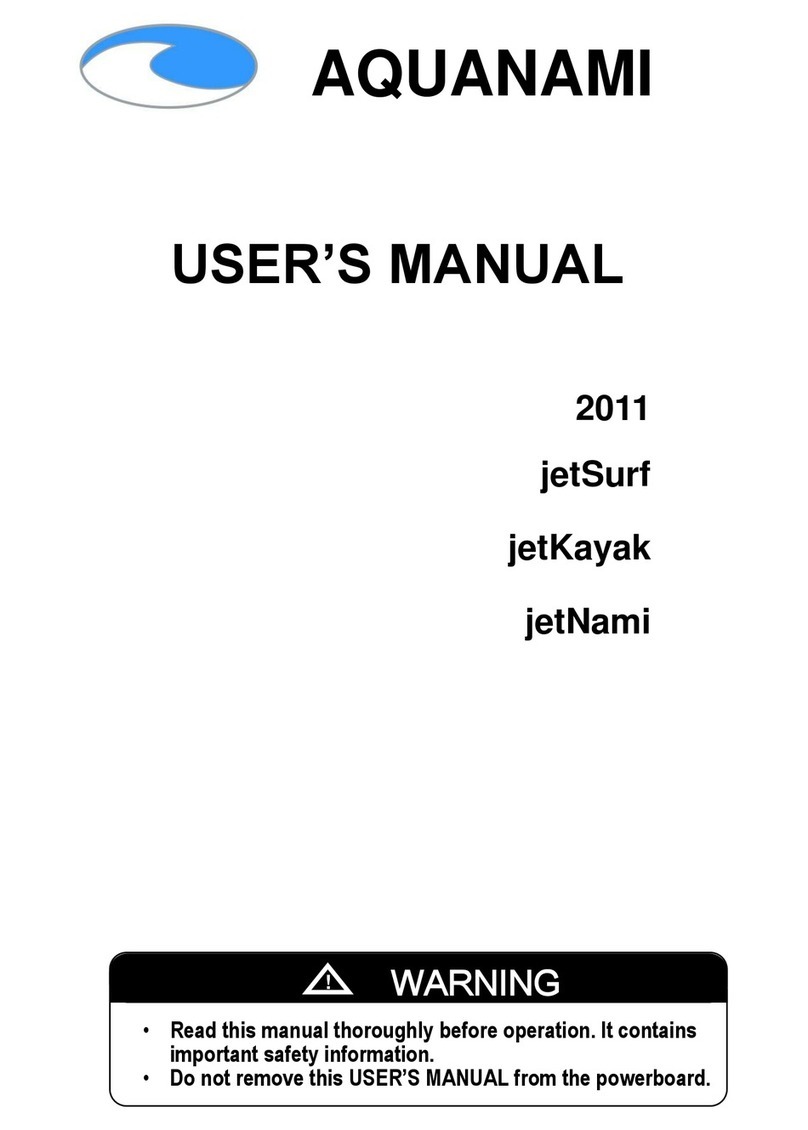
Aquanami
Aquanami jetSurf user manual

Sea Eagle Boats
Sea Eagle Boats Fishing Explorer 350fx Instruction & owner's manual

MasterCraft
MasterCraft 19 skier 2002 owner's manual

Scout Boats
Scout Boats 245 XSF owner's manual

Cobalt Digital Inc
Cobalt Digital Inc 276 bowrider owner's manual
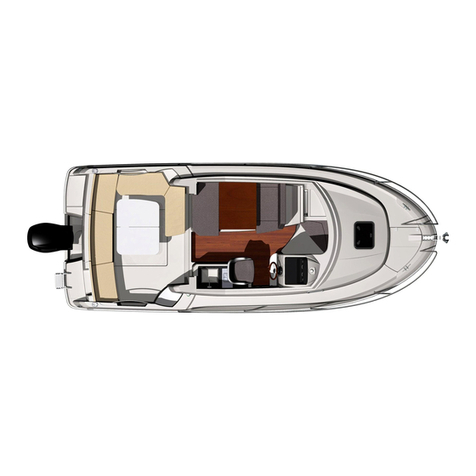
Jeanneau
Jeanneau MERRY FISHER 755 owner's manual
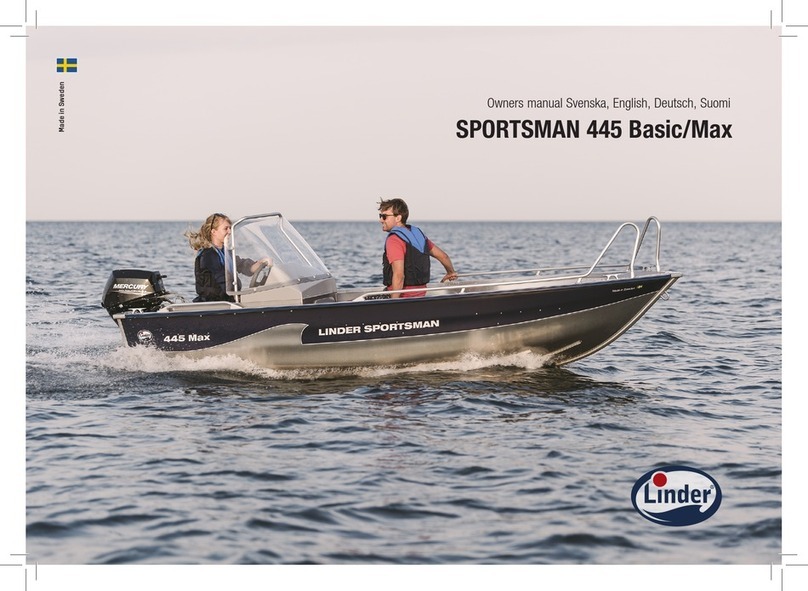
Linder
Linder SPORTSMAN 445 Basic owner's manual
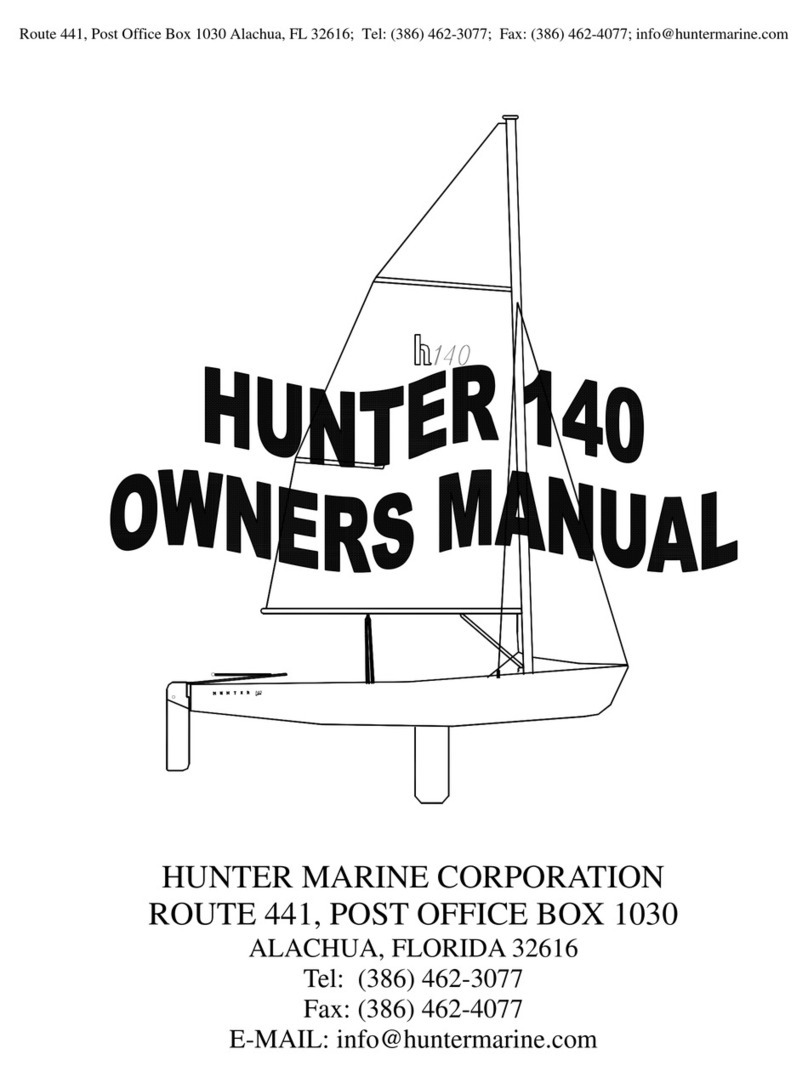
Hunter
Hunter HEPAtech 140 owner's manual
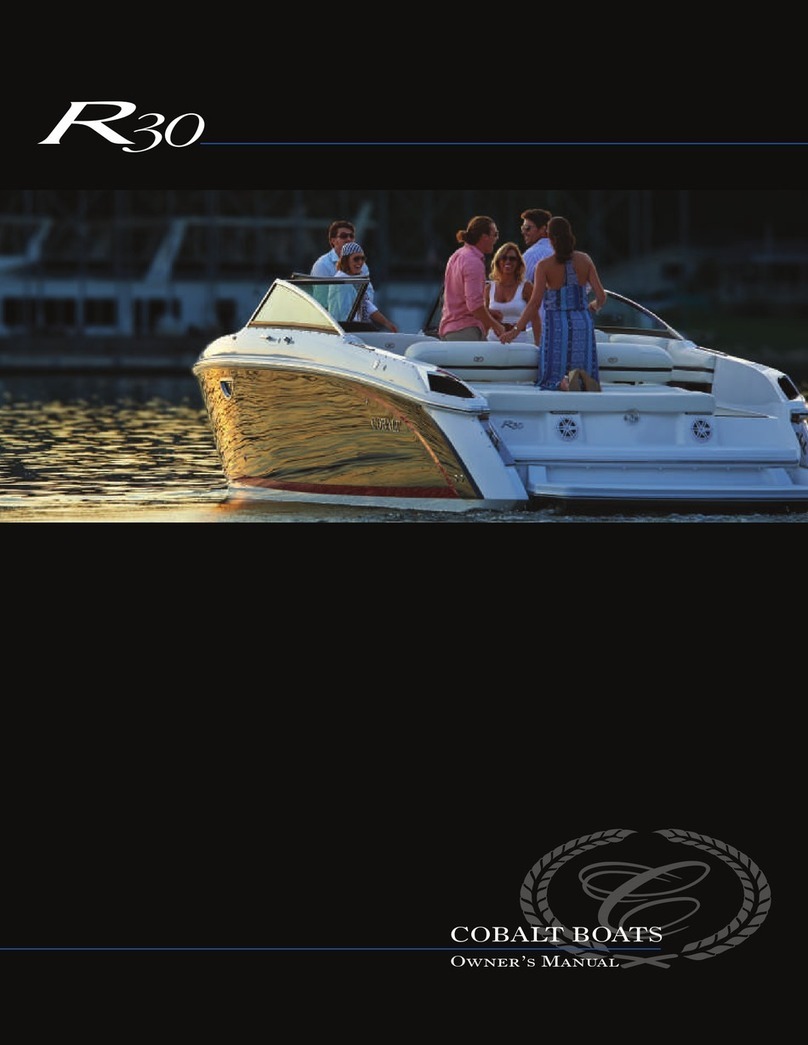
Cobalt Digital Inc
Cobalt Digital Inc R30 BOWRIDER owner's manual

Everglades
Everglades 210 CC 2012 owner's manual

MONTGOMERY BOATS
MONTGOMERY BOATS 340 SPORT YACHT owner's manual

Monterey Boats
Monterey Boats 186MS owner's manual

